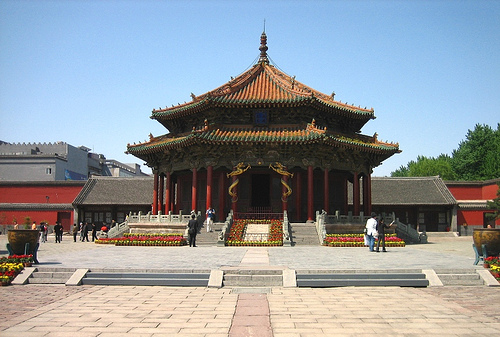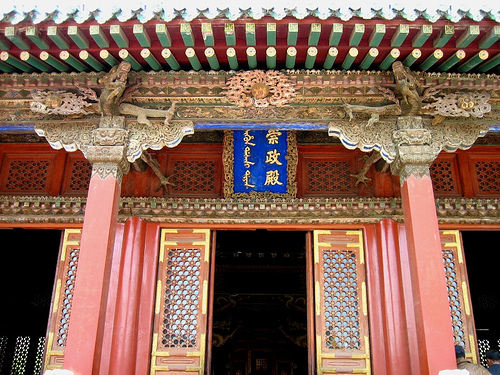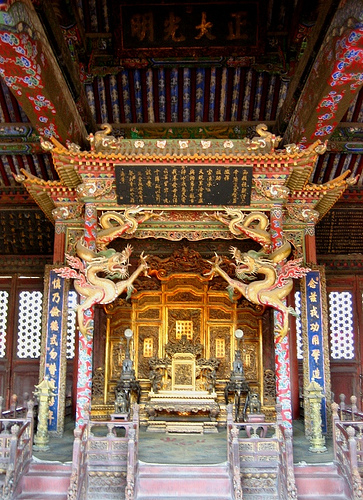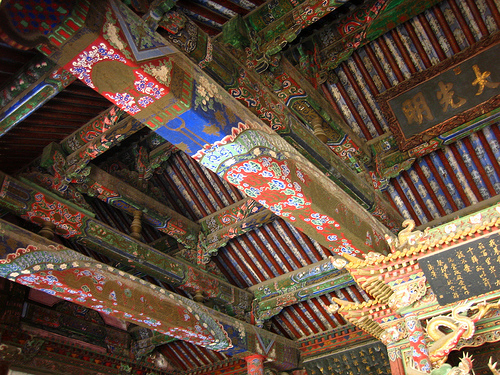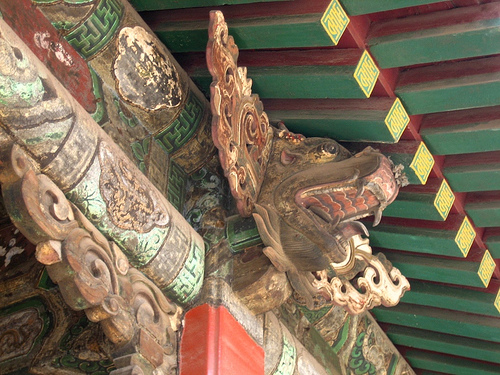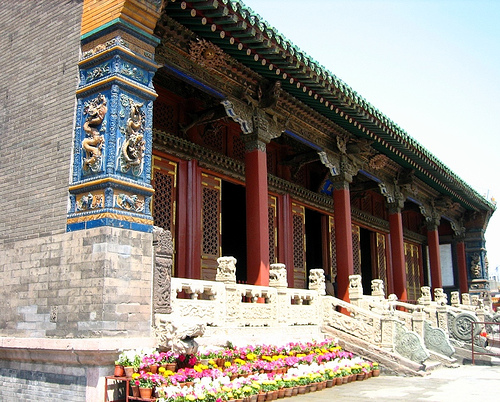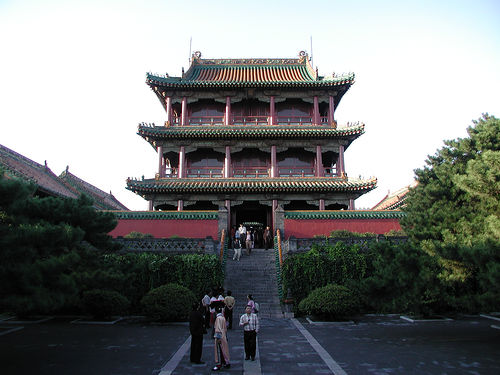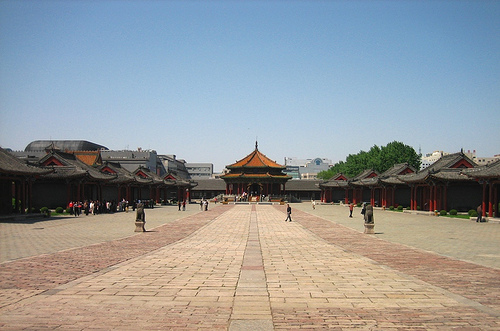| Tools: Save | Print | E-mail | Most Read |
| Shenyang Imperial Palace |
| Adjust font size: |
The
Covering an area of more than 60,000 square meters (about 71,760 square yards), the The palace can be divided into three sections-the eastern section, the middle section and the western section. Each section boasts of unique characteristics. The eastern section contains the very impressive Hall of Great Affairs (Da Zheng Dian). Here emperors ascended the throne, enacted imperial edicts, and welcomed victorious generals and soldiers. A group of pavilions, known as the Ten Kings Pavilion, stand to its east and west. They formerly served as the place where emperors and leaders from the eight banners (Ba Qi) settled national affairs. This architectural style of The middle section starts from the Da Qing Gate, with Chong Zheng Dian (Jin Luan Dian), the
The western section was constructed by order of Emperor Qianlong (1711-1799). Its main structure is the Wen Su Pavilion. In front of this, there are the Opera Stage and Jiayin Hall and behind it is the Yang Xi Room. The Wen Su Pavilion, which contains the Complete Collection of Four Treasures, has a black roof because black was considered to represent water which could be used to extinguish a fire to protect the priceless books contained inside. The
Besides the Forbidden City in
Travel tips: Admission fee: 50 yuan Opening hours: 08:10 to 17:00 Recommended time for a visit: One hour Bus route: 213,222 (travelchinaguide.com )
|
| Tools: Save | Print | E-mail | Most Read |
 |
| Related Stories |
